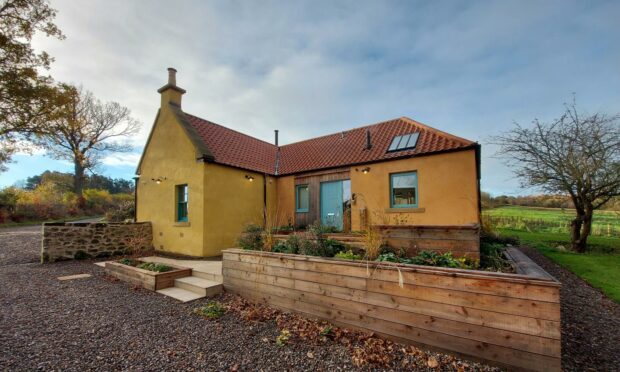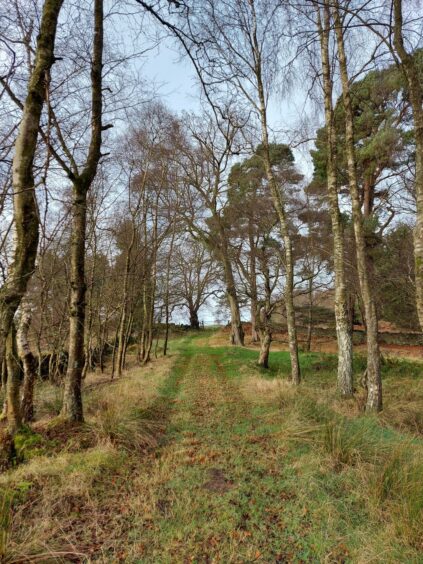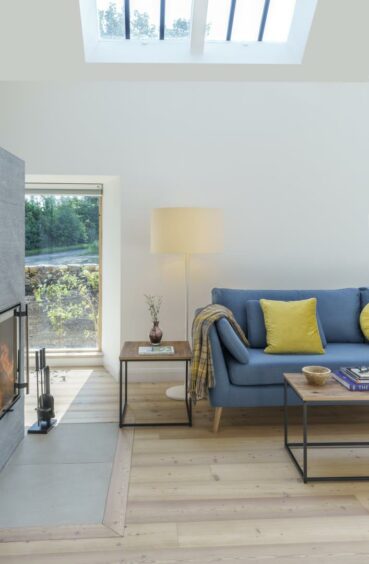For the last two years, restrictions on travel have forced many of us to search closer to home for that perfect getaway.
Staycations have become the norm across the UK, with people looking for a chance to simply relax and unwind.
So, if you’re looking for the perfect staycation or eager to step off the beaten track and explore new surroundings, then Brucefield Estate has everything you need.
Nestled in the Clackmannanshire countryside, the estate offers high-quality self-catering accommodation – ideal for anyone looking to escape the hustle and bustle of daily life.
Rooted in more than 700 years of history, the 420-hectare estate has become a hidden gem at the heart of Scotland’s smallest county.
Despite being a native to Clackmannanshire, this area was a complete mystery to me, so I was thrilled when I got the chance to stay at the estate’s Slackbrae Cottage.
As I turned off the main road, I quickly found myself completely immersed in the great outdoors.
Amidst the huge trees, dating back more than 300 years, and the rugged fields was where I discovered the idyllic yellow cottage of Slackbrae.
Within seconds of stepping through the front door, I was mesmerised by its modern interior design.
Combining a blend of both Scandinavian and traditional Scottish décor, estate owner and biologist Victoria Bruce-Winkler has created a contemporary feel within the bounds of a historic build.
The pièce de résistance of this idyllic escape is the tranquil location, a retreat at the heart of Scotland’s wilderness.
Brucefield Estate has a rich landscape full of architectural history and ancestry dating back hundreds of years.
The estate was formerly part of the Barony of Schenbothy and was first owned by the Stewarts of Rosyth.
In 2012, Ms Bruce-Winkler took ownership of the family estate, pioneering a major regeneration project across the land.
The transformation of Slackbrae Cottage marked the first major milestone in her regeneration journey.
The luxury two-bedroom dwelling, which was formerly a forester’s cottage, boasts a large open-plan layout, featuring a spacious kitchen, dining area, living room, twin room and a luxury master suit with en suite bathroom.
The main living room is brought to life during the day by the natural light streaming in through the skylight windows.
However, as darkness falls and a chill sets in the air, you can bask in the warmth of the stunning masonry stove.
From every window of the cottage, you are greeted with stunning views of the surrounding woodland.
The cottage also has the privacy of its own gardens, complete with a small patio area.
My favourite view was the one from the patio, located at the rear of the property.
Sitting on the picnic bench amongst the stillness, watching the wildlife drift past and the sun going down, brought a sense of inner peace.
One aspect that stuck out to me during my stay at the cottage was the owner’s drive to support the local economy.
During my two night-stay, I was provided with a delicious breakfast hamper and an evening meal, containing all locally sourced produce – from homemade jams to locally sourced honey.
Guests are also encouraged to protect the beauty of the great outdoors by lowering their carbon footprint.
Eco-friendly and organic products are provided throughout the property alongside various recycling bins.
Following the success of Slackbrae, the proprietors are now preparing to endorse the format elsewhere on the estate, through the unveiling of three new eco bothies.
The Scandinavian-Scottish inspired interior, created within each bothy, has been created from bespoke birch plywood.
The bothies will offer a relaxing stay to guests eager to immerse themselves in nature and wildlife.
Despite being situated in a remote location, there are plenty of things to see and do in the local area.
The former Alloa to Dunfermline railway line runs through the middle of the
estate, providing traffic-free cycling and beautiful views.
You can also take a leisurely walk along what once was the main road to the estate, in search of the Witches Stone.
Just six miles away is the picturesque town of Dollar, where you can immerse yourself in the town’s history at the local museum or take a stroll up the Dollar Glen Walk.
The town is also home to Dollar Academy, featuring a splendid Doric façade designed by architect William Playfair in the 1820s.
Culross, which lies seven miles away, represents a prime example of 17th and 18th Century burgh towns in Scotland.
Bought by the National Trust for Scotland in the 1920s, the winding streets and buildings have undergone extensive conservation.
On of my favourite spots was visiting Powmill Milk Bar, located just seven miles east of the estate, in Kinross.
The café offers homemade cakes and refreshments, providing a prime opportunity to support the local economy whilst sampling local produce.
I thoroughly enjoyed my time at Slackbrae Cottage exploring more of the local area and embracing the panoramic views.
For anyone looking for a relaxing break amidst the calming influence of nature, a visit to Brucefield Estate could be just what you are after.







